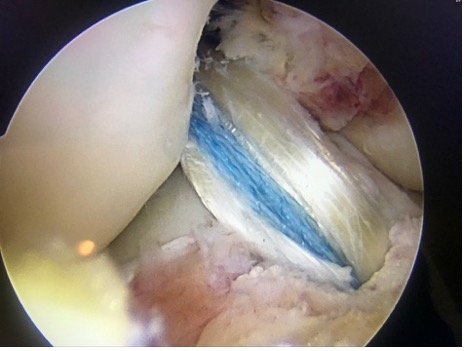A Quick Summary of ACL Reconstruction Surgery Lingo
OK, you’ve gotten over the shock of tearing your ACL, concluded that you should have surgery, and now your surgeon wants your input on what he should use to replace your ACL. But it feels like he is speaking a different language. Lets go over some of the lingo:
ACL Repair: This surgery repairs the torn ACL back down to the bone rather than replacing the ACL. It is rare for a surgeon to repair an ACL that is torn in its mid-substance. If, and only if, the ACL is relatively intact but simply pulled off its attachment to the femur or tibia then the ligament can be saved and repaired. Only about 10% of torn ACLs are amenable to a repair. The advantages are a quicker recovery, less risk of scar tissue, and a potentially quicker return to sports. Typically, 4-6 months for an unrestricted return to sports, rather than the 6-9 months required of a full ACL Reconstruction.
ACL Reconstruction: This surgery refers to the replacement of a torn ACL. If the ACL is torn within its fibers then it should not be repaired and should be replaced. This is done by drilling tunnels within the femur and the tibia and placing a new ligament within the tunnels acting and functioning like a new ACL
Extra-Articular Augmentation or Tenodesis: In a revision situation or if the patient is hyper lax (loose jointed), your surgeon may recommend adding this procedure to your ACL Reconstruction. This procedure involves a 4”-6” incision on the lateral side of the knee and redirecting the middle third of the IT Band to wrap around the Lateral Collateral Ligament providing additional rotational stability to the knee.
Allograft: This refers to using a cadaver graft to replace your torn ACL. Common grafts for this are the patellar tendon, hamstring tendons, quadriceps tendon and even ankle tendons. Whatever is utilized will be stronger than your torn ACL. Your body will remodel this eventually into your own cells, and actual ACL fibers and cells. During this remodeling period the graft becomes weaker before eventually becoming stronger.
Autograft: An autograft is tissue taken from one part of a patient’s own body to replace the torn ACL. Common autograft choices would be patellar tendon, hamstring tendons and the middle third of the quadricep tendon.
Quadriceps Auto Graft
Internal Brace: A tape of polypropylene material that resembles a rope and is placed in parallel with the ACL graft to act as augmentation while the graft is undergoing remodeling.
Biologics for ACL Surgery
Biologics: This refers to adding your own blood or bone marrow to the ACL reconstruction grafts. You may hear the term PRP which refers to Platelet Rich Plasma which is very rich in growth factors and some multipotential stem cells. You may also hear the term BMAC, or Bone Marrow Aspirate Concentration when we refer to true stem cells. This is much richer in pluripotential stem cells, and additionally has a great deal of Growth Factors. Make sure you ask about these as possible adjuncts for your surgery.
Bone Marrow Concentrate
Get Back In The Game With Team Sterett’s Expert Care
Dr. Sterett and his team of sports medicine specialists at Vail-Summit Orthopaedics & Neurosurgery are the preferred choice for those wanting the highest level of care.
Contact Team Sterett today for personalized treatment that will get you back to your peak performance. Call (970) 476-7220 today or request a consultation using our online form.
Telehealth Appointments are Also Available!
Dr. Sterett offers the convenience of telemedicine. As a highly sought-after expert by patients across the country, you can schedule a virtual consultation today to receive his unparalleled care from the comfort of your home. https://drsterett.com/about-telemedicine




